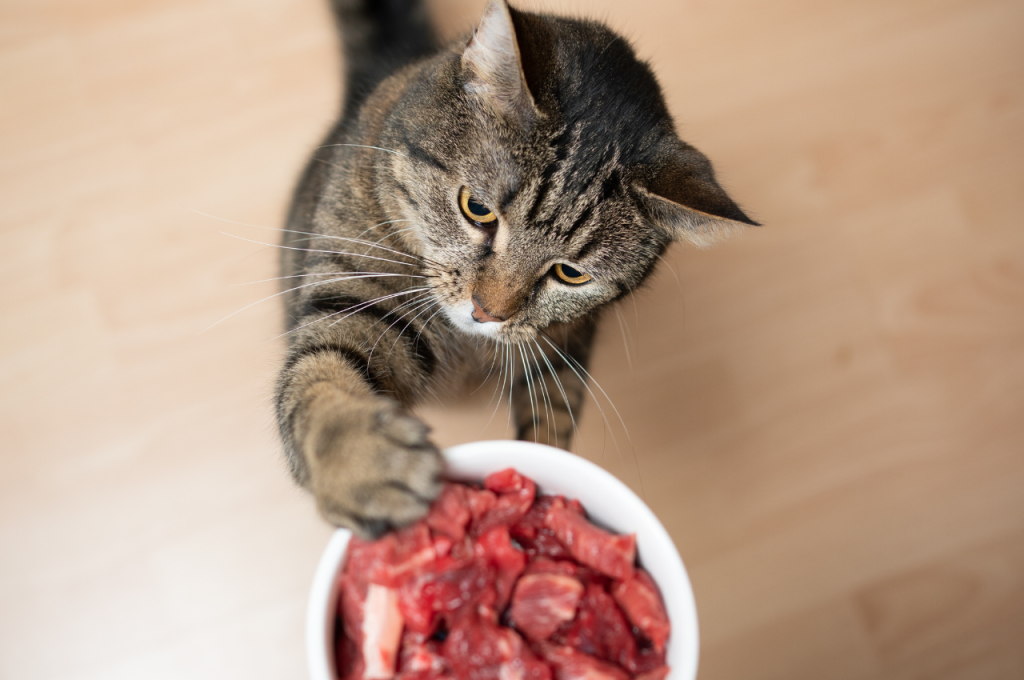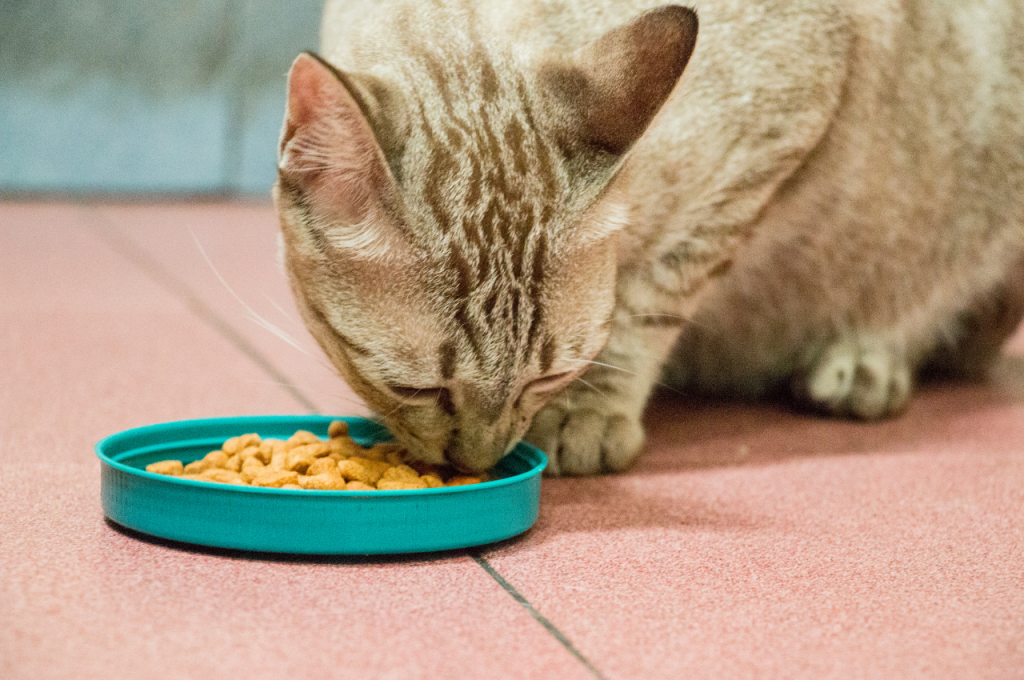Choosing between cat food and cat treats depends on their nutritional needs and the purpose of the meal. Both serve different functions, with cat food providing essential nutrients for daily sustenance, while cat treats are typically used for training or as an occasional snack.
When deciding between the two, it’s crucial to consider the overall health benefits and nutritional value for your feline friend. While cat food is a staple diet that should meet their nutrient requirements, cat treats should be given in moderation to avoid overfeeding and potential health issues.
Understanding the distinction between cat food and cat treats will help you make informed decisions that prioritize your cat’s well-being.
The Difference Between Cat Food and Cat Treats
Cat food and cat treats serve distinct purposes in your feline friend’s diet, each contributing to their overall health and well-being. Understanding the differences between the two can help you provide the best care for your cat. Here’s a breakdown of the key distinctions:

Ingredients and Nutritional Value
Cat food is formulated with essential nutrients for balanced meals. Cat treats are often higher in calories and lower in nutritional value.
Purpose and Frequency of Feeding
Cat food serves as the primary source of nutrition for daily meals, while cat treats are used for occasional rewards or training purposes.
Health Impact of Cat Food and Cat Treats
Cat food and cat treats play a crucial role in the overall health and well-being of your feline companion. Understanding the health impact of these dietary options is essential for ensuring your cat maintains a balanced and nutritious diet.
Effects on Weight and Digestion
The type of food a cat consumes can significantly impact its weight and digestion. High-quality cat food provides essential nutrients in appropriate quantities, promoting healthy weight management and optimal digestion. Conversely, excessive consumption of cat treats, which are often high in calories and low in essential nutrients, can lead to weight gain and digestive disturbances. Moderation is key when incorporating treats into your cat’s diet to avoid potential weight-related issues.
Potential Allergies and Sensitivities
Both cat food and cat treats have the potential to trigger allergies and sensitivities in some felines. Cat food formulated with common allergens such as grains or certain protein sources can cause adverse reactions in sensitive cats. Similarly, certain ingredients in cat treats, such as artificial colors, flavors, or preservatives, may lead to allergic responses. It’s vital to be mindful of the ingredients present in both food and treats to mitigate the risk of allergic reactions in your cat.
Preference and Palatability
When it comes to feeding our feline companions, we all want to give them the best, most delicious food possible. After all, a happy and satisfied cat makes for a happy pet parent. Two main aspects that play a crucial role in a cat’s preference for food are texture and flavor preferences, and the role of smell and size in their choice.
Texture and Flavor Preferences
Texture: Just like humans, cats have individual preferences when it comes to the texture of their food. Some cats prefer the crunchiness of kibble, while others may enjoy the smoothness of wet food. It is essential to provide a variety of textures to keep your cat interested and engaged during mealtime. Mixing different textures can also help meet their nutritional needs and prevent boredom in their diet.
Flavor: Cats have a highly developed sense of taste, and their flavor preferences can vary greatly. While some cats may have a particular fondness for chicken, others may prefer fish or other meat flavors. Introducing a diverse range of flavors can prevent your cat from becoming picky and ensure they receive a balanced diet. It’s also worth noting that some cats may have unique dietary sensitivities or allergies, so it’s crucial to monitor their reactions to different flavors.
Role of Smell and Size in Feline Choice
Smell: Cats have an incredible sense of smell, and it greatly influences their food choices. A strong aroma can make a meal more enticing for a cat. High-quality cat food often contains natural ingredients that give off an appealing scent, making it more likely to be enjoyed by your furry friend. Pay attention to the smell of the food you offer your cat and observe their reactions to determine their preferences.
Size: The size of the food also plays a role in a cat’s preference. Some cats may prefer smaller kibble pieces that are easier to chew, while others may enjoy larger pieces that require more biting and chewing. The size of treats can also impact their palatability. It’s important to consider your cat’s dental health and their preferences when choosing the appropriate size of food or treats, ensuring they can enjoy their meals comfortably.
Training and Reward Strategies
One of the key aspects of cat ownership is training, and an effective training strategy is crucial for a well-behaved and happy feline friend. When it comes to training and rewarding your cat, the choice between cat food and cat treats plays a significant role in achieving desirable results. In this section, we will explore how cat food and cat treats can be utilized in training and reward strategies.

Effectiveness in Training
Both cat food and cat treats can be used effectively in training sessions. Cat treats, with their enticing flavors and irresistible textures, tend to grab cats’ attention quickly. These treats are particularly useful for teaching specific tasks, such as sitting or shaking paws. By offering a small reward like a treat immediately after the desired behavior, you can reinforce positive actions and encourage your furry companion to repeat them.
On the other hand, cat food can also be an effective training tool, especially for behaviors that require longer sessions or more sustained effort. By using small portions of their regular food, you can create an association between work and reward. This method is especially helpful for essential commands like recall or crate training, where a larger reward is necessary.
Balancing Treats for Positive Reinforcement
When using treats for training purposes, it is crucial to strike a balance to prevent overindulgence or poor nutrition. While treats can be tempting, feeding them in moderation ensures that your cat’s daily nutritional needs are met. When selecting cat treats, opt for ones that are low in calories and made with high-quality ingredients. This way, you can provide the necessary positive reinforcement without compromising your cat’s overall health.
Remember to integrate treats into your cat’s daily calorie intake and adjust their regular cat food portion size accordingly. Maintaining a healthy weight is essential for your feline’s overall well-being and mitigates the risk of obesity-related health issues.
Nutritional Adequacy and Balanced Diet
When it comes to caring for your cat’s nutritional needs, it’s essential to understand the difference between cat food and cat treats. Nutritional adequacy and a balanced diet are crucial aspects when it comes to maintaining your cat’s health and well-being.
Balancing Treats With Regular Meals
While cat treats can be a delightful way to reward your furry friend or reinforce positive behavior, it’s important to maintain a balance with their regular meals. Incorporating treats into your cat’s diet should be done sparingly to prevent overconsumption that could lead to obesity and nutrient imbalances. Balancing the intake of treats with their main meals ensures that your cat receives the essential nutrients they needs while still indulging in the occasional special treat.
Avoiding Nutritional Imbalances
It’s essential to be mindful of the nutritional content of both cat food and treats to avoid potential imbalances. Ensuring that the cat food and treats you provide are formulated to meet your cat’s nutritional requirements helps prevent deficiencies or excesses of certain nutrients. When selecting cat food and treats, opt for options that are labeled as complete and balanced, indicating that they meet the necessary nutrient levels established by regulatory guidelines.
Incorporating Variety in Feline Diet
Providing variety in your feline’s diet is essential for optimal nutrition and overall well-being. By offering a variety of foods, you can provide them with a range of nutrients and flavors that contribute to their overall well-being. By embracing variety in their diet, they thrive both physically and mentally.
Rotating Treat Options
Switch up your cat’s treatment choices regularly to avoid boredom and ensure they receive a range of nutrients.
Mixing Treats with Different Purposes
Offer treats that serve various purposes such as dental health, hairball prevention, and weight management.
Holistic Health Approach for Cats
Cats are beloved members of the family, and just like humans, they deserve a holistic approach to health and nutrition. A holistic health approach for cats emphasizes the importance of considering their physical, mental, and emotional well-being.
Natural and Homemade Treat Options
Natural and homemade treats provide an excellent way to complement your cat’s diet. These treats can be crafted from simple, wholesome ingredients that cater to their dietary needs. From homemade salmon treats to natural catnip snacks, these options can be a healthier alternative to store-bought options.
Supplementing Commercial Diets with Natural Alternatives
Supplementing commercial diets with natural alternatives can enhance your cat’s overall well-being. This can include adding fresh, high-quality proteins like chicken, turkey, or fish to their meals. Additionally, incorporating fruits and vegetables as treats can provide essential nutrients and variety to their diet.

Conclusion
In sum, both cat food and cat treats are essential for a feline’s diet. It’s crucial to strike a balance between the two, ensuring that your cat receives the necessary nutrients while also enjoying delicious treats.
Understanding your cat’s individual needs and preferences is key to providing a healthy and fulfilling diet.
